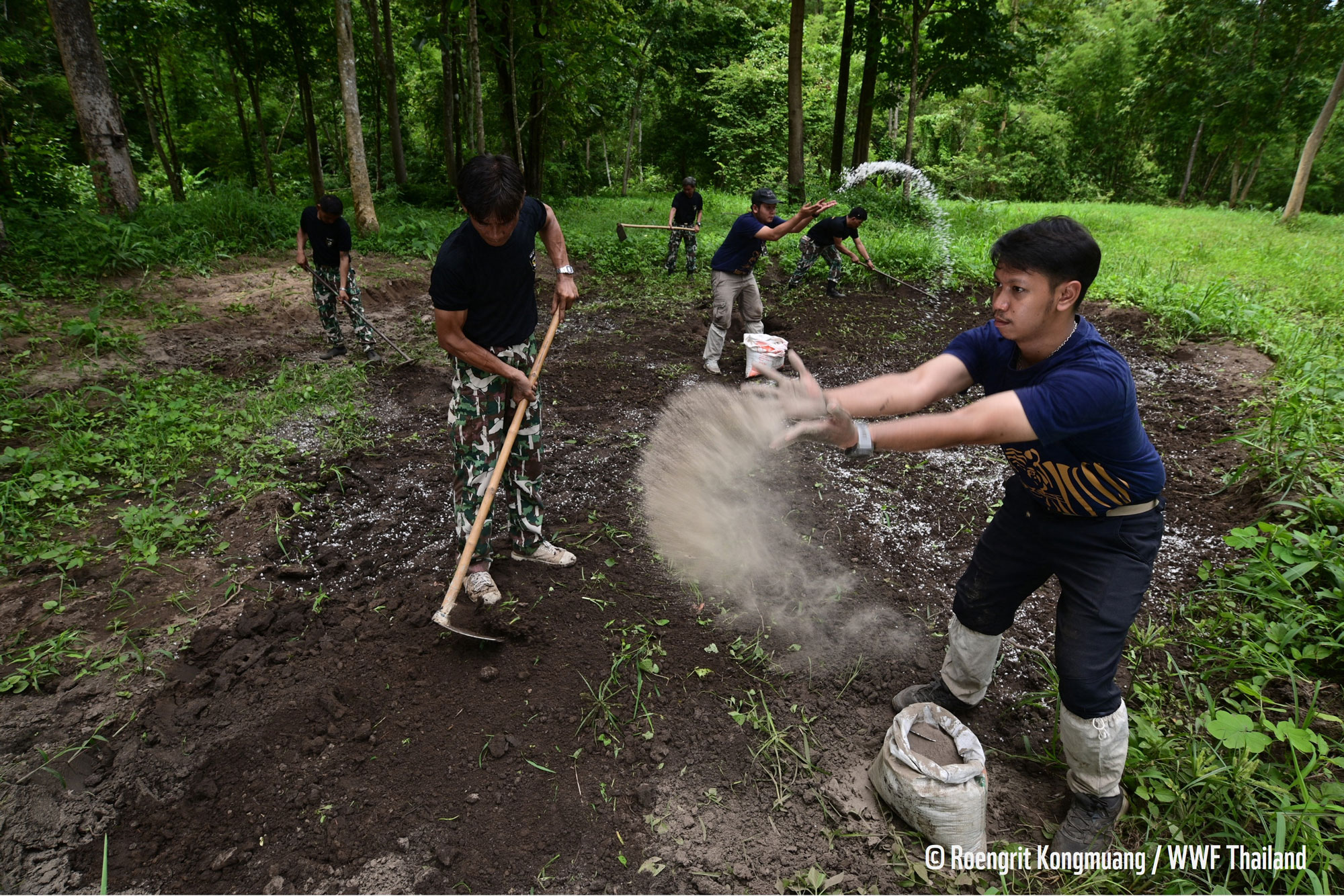The situation of the ungulate population in the Mae Wong – Khlong Lan Forest remains a concern. According to our long-term research, ungulate populations are small and their distribution is limited. Large ungulates, such as gaur and sambar deer, were found in only 20 percent of the total area due to heavy poaching in the past before the area was protected as a national park. In addition, grassland and natural salt licks, which are important food sources for ungulates are scarce in the area. Furthermore, the topography is dominated by high mountains and steep slopes. This area is, therefore, relatively less suitable for ungulates and cannot support their reproduction.
The sambar (Rusa unicolor) is currently listed as Vulnerable on the IUCN Red List. They contribute to the food chain as seed dispersers who help to maintain the balance of forest ecosystems. However, sambars are distributed in a limited area, and their population growth is very slow. As a forest-native species, it is critical to prioritise restoration efforts to increase their population and distribution.


Our Tiger Recovery Program is working to boost sambar population recovery, through (a) Sambar augmentation – introducing sambars from captivity into Mae Wong and Khlong Lan National Parks, and (b) Habitat improvement – constructing salt licks, grasslands, and waterholes that improve habitat conditions for sambars to increase population growth rates, thereby contributing to increased biodiversity and ecosystem functioning.
All processes involved in the sambar augmentation project were closely monitored by veterinarians following Thai law, and prioritised the welfare of wildlife for animal handling and translocation standards. Since it is critical to monitor the animals following their release, the survival and distribution rates of the deer are, therefore, being closely studied in order to determine the success of the intervention.


Sambar population augmentation is a key component of the tiger recovery project in the Upper Western Forest Complex (WEFCOM).
Since 2021, the Department of National Parks, Wildlife, and Plant Conservation, together with WWF Thailand, has released 119 sambar into Mae Wong-Khlong Lan National Park. The procedures and techniques used for the release comply with Thai law and the WWF Animal Handling and Translocation Standard. In 2024, we released 24 sambar, consisting of 13 females and 11 males. All the deer were safely transported from the Khao Kho Wildlife Breeding Center, our main source for sambar each year, and the Khao Son Wildlife Breeding Center.
One aspect of our sambar project involves supporting these breeding centers by providing animal feed, building and repairing enclosures, supplying equipment, and more, to aid in the breeding of sambar for reintroduction. After translocation to a fenced enclosure, the sambar were kept there for a week to acclimate to their new environment before being released.
Support WWF’s conservation work and stay up to date on exciting wildlife news and special behind-the-scenes stories.